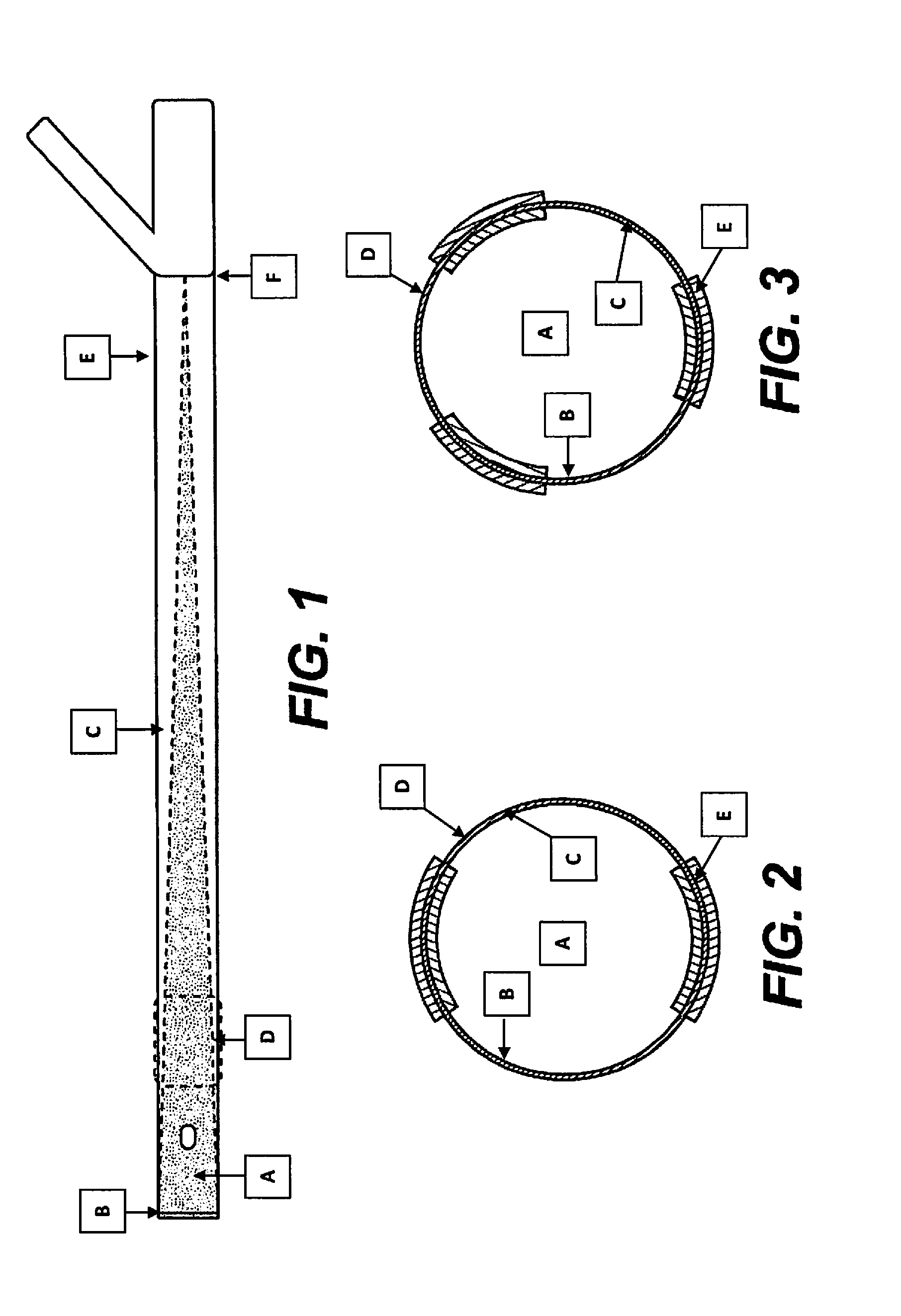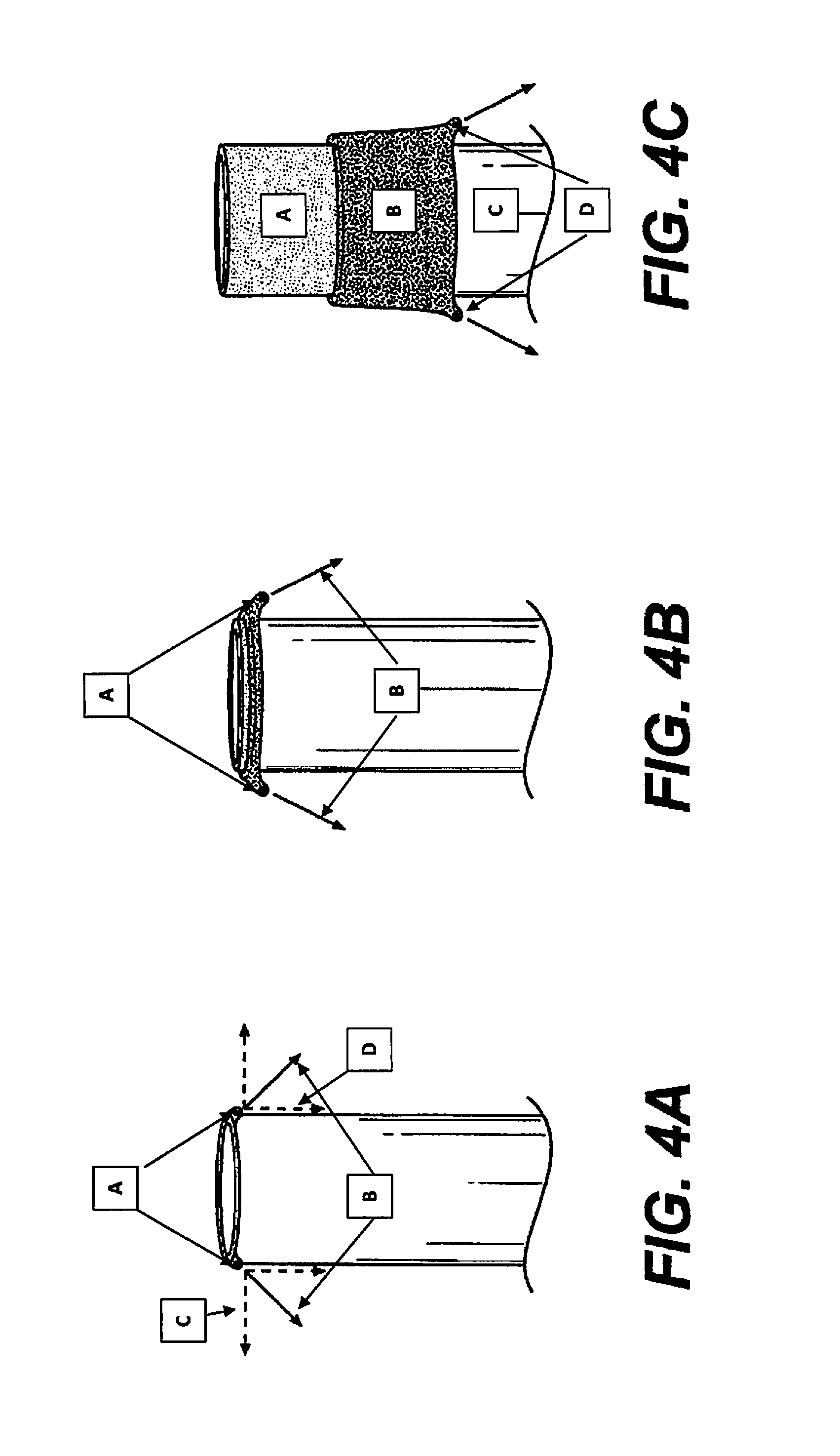Compositions and Methods for Preventing and Ameliorating Fouling on Medical Surfaces
a technology for medical surfaces and compositions, applied in the field of compositions and methods for preventing and ameliorating fouling on medical surfaces, can solve the problems of difficult elimination of biofilms, persistent infection in patients, and difficult adherence of microorganisms to medical surfaces, so as to reduce the number of microorganisms released into the host tissue and clear free-floating microorganisms more effectively
- Summary
- Abstract
- Description
- Claims
- Application Information
AI Technical Summary
Benefits of technology
Problems solved by technology
Method used
Image
Examples
example 1
[0052]An exemplary embodiment consists of a rapidly degradable polyelectrolyte thin film applied to all surfaces of the device exposed to bodily tissue during or after insertion. The surface erosion of this coating ideally begins immediately after insertion but no later than 4 hours post-insertion, prior to entry to the exponential growth phase of adherent microbes (e.g., S. aureus). As described in U.S. Pat. No. 8,106,652, hereby incorporated by reference in its entirety, polyelectrolyte thin films may be composed of two polymers, one which is positively charged and the other which is negatively charged at processing pH, that are bound together by electrostatic interactions. When one or both of the polymers is subjected to hydrolysis and separates into water soluble monomers, these electrostatic interactions between the polymers are also disrupted.
[0053]An ideal coating would be rapidly biodegradable, and the byproducts would be bioinert and water soluble at physiologic conditions....
example 2
[0057]In another embodiment, the composition can be a non-degradable composition that is removed mechanically using a ‘peel-away’ method during or following insertion. The peel-away or inside-out removal method is intended to encapsulate the biofilm during composition removal as to prevent dispersal of microbes into host tissue. Such embodiments can be single-layered or multilayered.
[0058]The following embodiment describes a non-degradable multilayered composition that can be mechanically removed utilizing a ‘peel away’ method as it is applied onto the extraluminal surfaces of short-term use (i.e. less than 14 days) foley catheters to prevent catheter-associated urinary tract infection secondary to biofilm formation on the foley catheter surface. Such an embodiment is depicted from a side view in FIG. 1.
[0059]In FIG. 1, element 1.A refers to a tag or tab which is non-adherent to the underlying layer of composition except at the distal end, such that a force applied at the proximal e...
example 3
[0069]In another embodiment, the composition can be a non-degradable composition that is removed mechanically without using a ‘peel-away’ method during or following insertion. Such a method would be more utilized for implanted devices at insertion, wherein the peel-away method may be more difficult to execute due to geometries of the devices and their insertion sites. The following embodiment describes a non-degradable multilayered composition that can be mechanically removed at insertion to prevent biofilm formation and subsequent clinical infection secondary to microbe seeding during or prior to insertion to prevent catheter-associated urinary tract infection secondary to biofilm formation on the foley catheter surface.
[0070]Transvenous pacemakers and intracardiac defibrillators, also referred to as cardiovascular implanted electronic devices (CIEDs), generally consist of two components, a pulse generator that is implanted subcutaneously in the abdominal or pectoral area and one t...
PUM
| Property | Measurement | Unit |
|---|---|---|
| Time | aaaaa | aaaaa |
| Time | aaaaa | aaaaa |
| Lifetime stability | aaaaa | aaaaa |
Abstract
Description
Claims
Application Information
 Login to View More
Login to View More - R&D
- Intellectual Property
- Life Sciences
- Materials
- Tech Scout
- Unparalleled Data Quality
- Higher Quality Content
- 60% Fewer Hallucinations
Browse by: Latest US Patents, China's latest patents, Technical Efficacy Thesaurus, Application Domain, Technology Topic, Popular Technical Reports.
© 2025 PatSnap. All rights reserved.Legal|Privacy policy|Modern Slavery Act Transparency Statement|Sitemap|About US| Contact US: help@patsnap.com



